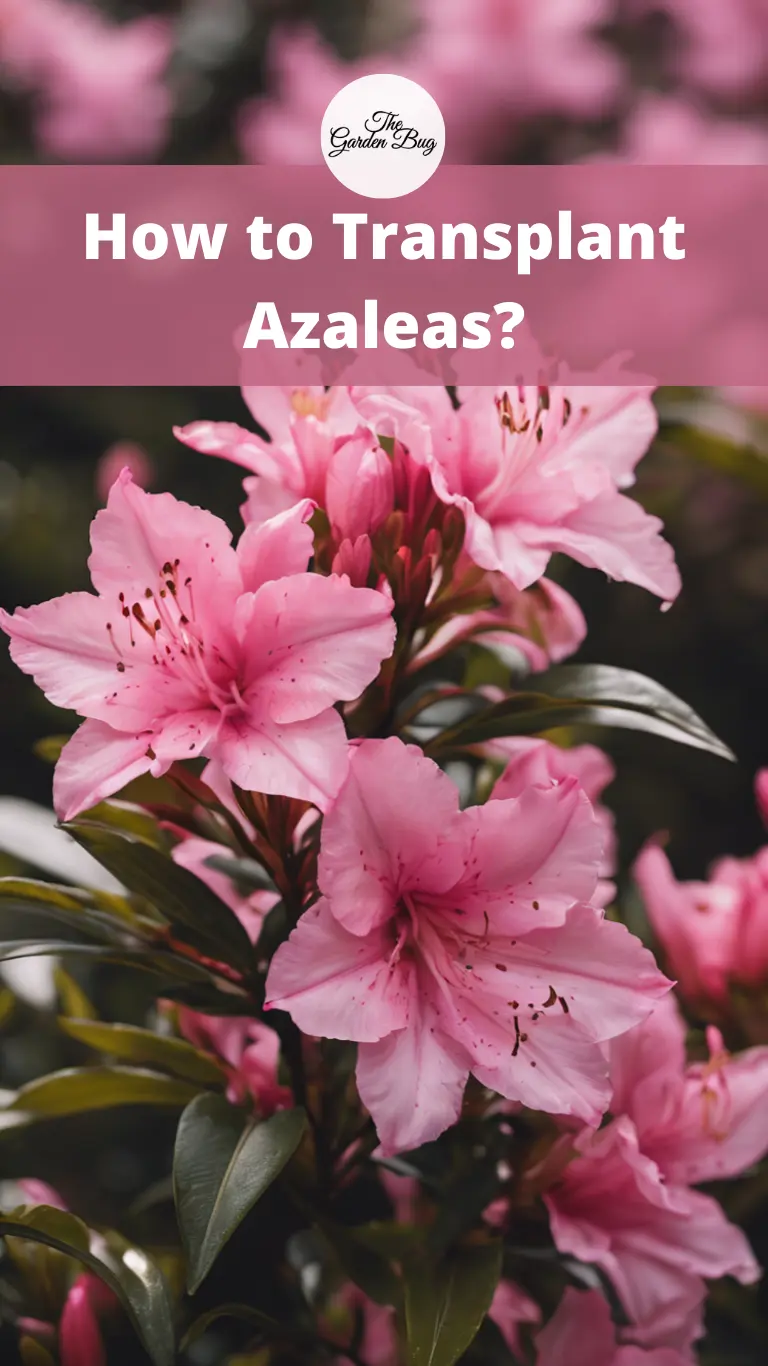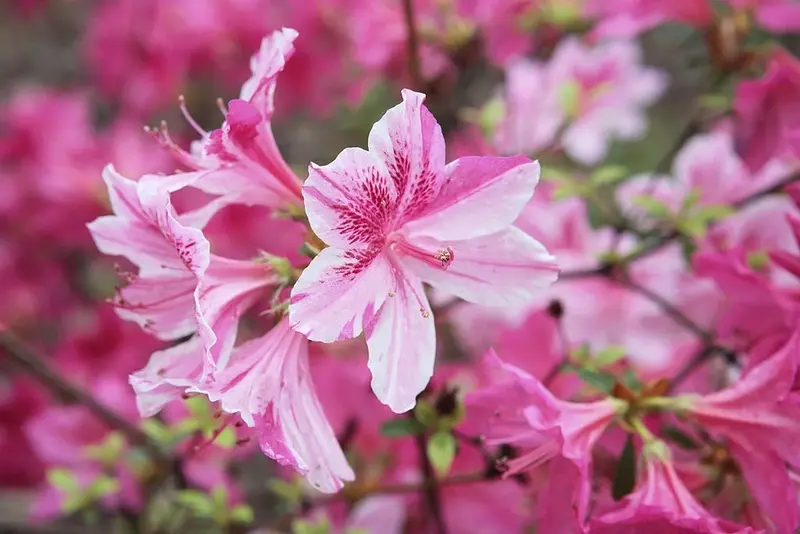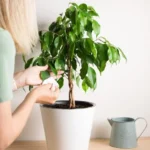Transplanting azaleas is an essential task for ensuring their health and promoting their growth. If you have azaleas in your garden that have outgrown their current location or need to be moved for any reason, transplanting them correctly is key to their survival. In this guide, we will explore the process of transplanting azaleas and provide you with helpful tips to make the process successful.
- Semi double rich purple flowers with green foliage
- USDA zones 6-10
- Plant in sun to part shade
- Expected Blooming Period: Spring To Fall
- Deepedt purple Encore Azalea on the market! Rich hues of violet from Spring to first Frost! Impossibly beautiful clusters of blooms
Understanding Azalea Transplanting
Azaleas are beautiful flowering shrubs known for their vibrant colors and delicate blooms. They thrive in well-drained soil and prefer partial shade, making them popular choices for gardens and landscapes. However, as azaleas grow, their root systems can become crowded, and they may need more space to flourish.
Transplanting azaleas involves carefully removing the plant from its current location and replanting it in a new spot where it can thrive. This process allows the azalea to establish new roots in fresh soil and provides it with the necessary space to grow and bloom.
Transplanting azaleas should be done during specific times of the year to minimize stress on the plant. The best time to transplant azaleas is in the early spring or late fall when temperatures are mild, and the plant is in a dormant state. Avoid transplanting azaleas during hot summer months or when the plant is actively blooming, as this can shock the plant and inhibit its ability to recover.
By understanding the needs and growth habits of azaleas, you can better prepare yourself for the process of transplanting them. In the following sections, we will delve into the steps involved in successfully transplanting azaleas and provide you with valuable tips to ensure the health and vitality of your plants.
Tools and Materials Needed
Before you begin transplanting your azaleas, it’s important to gather the necessary tools and materials. Here are some items you will need:
- Shovel or garden fork: These tools will help you dig around the base of the azalea and loosen the soil.
- Pruning shears: Use sharp pruning shears to trim any dead or damaged branches from the azalea before transplanting.
- Wheelbarrow or large container: This will come in handy for transporting the azalea to its new location.
- Organic matter or compost: Adding organic matter or compost to the soil can improve its fertility and drainage, providing a healthy environment for the transplanted azalea.
- Mulch: Mulch helps retain moisture in the soil and provides insulation for the roots of the azalea.
- True Organic Azalea, Camellia, and Rhododendron Food Granual Fertilizer: Contains 4 lbs of CDFA, OMRI Listed flower food for organic gardening NPK 5-4-3
- How To Use: Apply monthly during growing season. Our 4 pound bag covers up to 70 sq ft.
- Made With 100% Organic and Natural Ingredients: True Organic plant fertilizers exceed industry requirements for clean sourcing and testing for pathogens and are pet friendly
- Our Specialty: We manufacture all of our products in the USA for the highest quality, ethically sourced, organic plant foods and fertilizers
- Farm To Table: Our plant fertilizers offer more farm grade, certified premium organic content than any plant food sold today to regenerate the soil and produce healthier fruits and vegetables
Preparing the New Planting Location
Choosing the right location for your azalea is crucial for its successful transplant. Here’s what you need to do:
- Select a spot with well-drained soil: Azaleas prefer soil that is slightly acidic and well-drained. Avoid areas with heavy clay soil or standing water.
- Determine the amount of sunlight: Azaleas thrive in partial shade, so choose a location that receives morning sun or filtered sunlight.
- Prepare the soil: Dig a hole that is wider and slightly shallower than the root ball of the azalea. Mix in organic matter or compost with the existing soil to improve its quality.
- Water the soil: Before transplanting, water the soil in the new planting location thoroughly. This will help the azalea adjust to its new surroundings and reduce transplant shock.
Transplanting Azaleas: Step-by-Step Guide
Follow these steps to transplant your azaleas successfully:
- Dig around the base: Use a shovel or garden fork to dig around the base of the azalea, creating a wide circle around the root ball. Be careful not to damage the roots.
- Lift the azalea: Gently lift the azalea from the ground, supporting the root ball. Place it in a wheelbarrow or large container for transportation.
- Prepare the new hole: Place the azalea in the prepared hole in the new planting location. Ensure that the top of the root ball is level with or slightly above the ground.
- Backfill the hole: Fill the hole with the amended soil mixture, gently tamping it down around the root ball. Avoid compacting the soil too tightly.
- Water thoroughly: Give the transplanted azalea a deep watering to settle the soil and hydrate the roots. Continue to water regularly during the first few weeks after transplanting.
Transplanting azaleas requires care and attention, but by following these steps, you can successfully relocate your azaleas to a new, suitable home.
Caring for Transplanted Azaleas
After transplanting your azaleas, it’s important to provide them with proper care to help them adjust and thrive in their new location. Here are some tips for caring for transplanted azaleas:
- Watering: Keep the soil around the azaleas consistently moist but not waterlogged. Water deeply and regularly, especially during dry periods, to ensure the roots receive adequate hydration.
- Mulching: Apply a layer of mulch around the base of the azaleas, leaving a few inches of space around the stems. Mulch helps retain moisture, suppresses weed growth, and provides insulation for the roots.
- Pruning: Avoid pruning the azaleas immediately after transplanting. Allow them some time to recover and establish themselves in their new location. Once they have settled, you can trim any dead or damaged branches to encourage healthy growth.
- Fertilizing: Wait at least a year before applying fertilizer to transplanted azaleas. During this time, they will be focusing on root development. After the first year, you can apply a balanced, slow-release fertilizer according to the package instructions.
- Protection from extreme weather: Provide protection to transplanted azaleas during extreme weather conditions. Shield them from harsh winds, frost, or excessive heat by using plant covers or creating a temporary barrier.
Common Problems and Solutions in Azalea Transplanting
Transplanting azaleas may sometimes come with challenges. Here are some common problems you may encounter and their solutions:
- Transplant shock: Transplanted azaleas may experience transplant shock, resulting in wilting or leaf drop. Ensure they receive adequate water and provide shade or shelter to reduce stress.
- Root damage: If the roots were significantly damaged during the transplanting process, it may affect the azalea’s ability to absorb water and nutrients. Be patient and allow the plant time to recover and regrow new roots.
- Pests and diseases: Keep an eye out for common pests such as aphids, spider mites, or fungal diseases. Regularly inspect the plants and treat any infestations or infections promptly using appropriate methods or organic pest control.
- INSECT KILLER: Kills Aphids, Mealybugs, Mites, Whiteflies, and more
- FAST ACTING: Kills listed insects in minutes! Effective against adult, larvae, and nymph stages of pests
- EASY TO USE: Ready-to-Use bottle makes application easy
- USE ON: For indoor or outdoor use on roses, flowers, fruits, vegetables, and even houseplants
Frequently Asked Questions About Azalea Transplanting
Here are some frequently asked questions about transplanting azaleas:
When is the best time to transplant azaleas?
The best time to transplant azaleas is during the dormant season in late winter or early spring before new growth begins. However, they can also be transplanted in early fall.
How deep should I dig when transplanting azaleas?
Dig a hole that is slightly shallower than the depth of the root ball. The top of the root ball should be level with or slightly above the ground.
Can I transplant azaleas in full sun?
Azaleas prefer partial shade, so it’s best to choose a location that receives morning sun or filtered sunlight. Full sun can be too harsh for them.
Conclusion
Transplanting azaleas requires careful planning and execution, but with the right techniques and care, you can successfully relocate these beautiful plants. Remember to choose the right time, provide proper watering and maintenance, and be patient as they adjust to their new environment. By following these guidelines, you can enjoy healthy and thriving azaleas in their new home.







